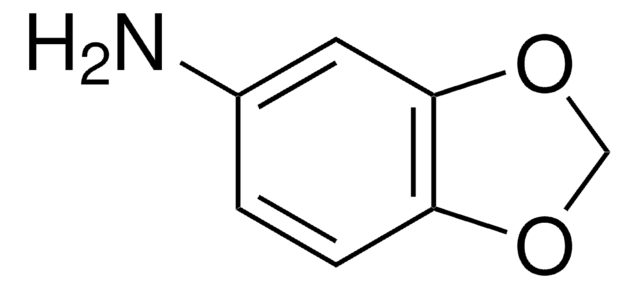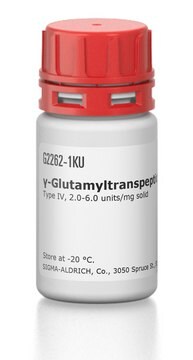17-10263
ChIPAb+ JMJD6 - ChIP Validated Antibody and Primer Set
from rabbit, purified by affinity chromatography
Sinonimo/i:
JMJD, jumonji domain containing 6, Phosphatidylserine receptor, Lysyl-hydroxylase JMJD6, Jumonji domain-containing protein 6, JmjC domain-containing protein 6, Peptide-lysine 5-dioxygenase JMJD6, Histone arginine demethylase JMJD63, Protein PTDSR
About This Item
Prodotti consigliati
Origine biologica
rabbit
Livello qualitativo
Clone
polyclonal
Purificato mediante
affinity chromatography
Reattività contro le specie
human
Reattività contro le specie (prevista in base all’omologia)
Xenopus (based on 100% sequence homology)
Produttore/marchio commerciale
ChIPAb+
Upstate®
tecniche
ChIP: suitable
western blot: suitable
N° accesso NCBI
N° accesso UniProt
Condizioni di spedizione
dry ice
Descrizione generale
The ChIPAb+JMJD1C set includes the JMJD1C antibody, a Normal Rabbit IgG, and control primers which amplify a 110 bp region of ChIP Primers, human β-globin. The JMJD1C and negative controls are supplied in a scalable "per ChIP" reaction size and can be used to functionally validate the precipitation of JMJD1C -associated chromatin.
Specificità
Immunogeno
Applicazioni
Representative lot data.
Sonicated chromatin prepared from HeLa cells (1 X 10E6 cell equivalents per IP) were subjected to chromatin immunoprecipitation using 1.4 µg of either Normal Rabbit IgGor Anti-JMJD6 and the Magna ChIP A Kit (Cat. # 17-610). Successful immunoprecipitation of JMJD6 associated DNA fragments was verified by qPCR using ChIP Primers, human β-globin as a positive locus, and β-actin promoter primers as a negative locus. (Figure 2). Data is presented as percent input of each IP sample relative to input chromatin for each amplicon and ChIP sample as indicated.
Please refer to the EZ-Magna ChIP A (Cat. # 17-408) or EZ-ChIP (Cat. # 17-371) protocol for experimental details.
Western Blot Analysis:
Representative lot data.
HeLa nuclear extract was resolved by electrophoresis, transferred to PVDF membrane and probed with Anti-JMJD6 (1 µg/mL). Proteins were visualized using a Donkey Anti-Rabbit IgG conjugated to HRP and chemiluminescence detection system.
Arrow indicates JMJD6 (~46 kDa). (Figure 3).
Immunocytochemistry Analysis:
Representative lot data.
Confocal fluorescent analysis of A431, HeLa cells using Anti-JMJD6 (Red). Actin filaments have been labeled with Alexa Fluor 488 dye-
Phalloidin (Green). Nucleus is stained with DAPI (Blue). This antibody positively stains the nucleus. (Figure 4).
Epigenetics & Nuclear Function
Histone Modifying Proteins
Confezionamento
Qualità
Representative lot data.
Sonicated chromatin prepared from HeLa cells (1 X 10E6 cell equivalents per IP) were subjected to chromatin immunoprecipitation using 1.4 µg of either Normal Rabbit IgG or Anti-JMJD6 and the Magna ChIP® A Kit (Cat. # 17-610). Successful immunoprecipitation of JMJD6 associated DNA fragments was verified by qPCR using ChIP Primers, human β-globin (Figure 1).
Please refer to the EZ-Magna ChIP A (Cat. # 17-408) or EZ-ChIP (Cat. # 17-371) protocol for experimental details.
Descrizione del bersaglio
Stato fisico
Concentration: 0.7 mg/mL
Normal Rabbit IgG. One vial containing 125 µg of Rabbit IgG in 125 µL of storage buffer containing 0.05% sodium azide. Store at -20°C.
ChIP Primers, human β-globin. One vial containing 75 μL of each primer (5 μM) specific for the human β-globin promoter. Store at -20°C.
FOR: AGG ACA GGT ACG GCT GTC ATC
REV: TTT ATG CCC AGC CCT GGC TC
Stoccaggio e stabilità
Note: Variability in freezer temperatures below -20°C may cause glycerol containing solutions to become frozen during storage.
Risultati analitici
Includes normal rabbit IgG and primers specific for human β-globin.
Altre note
Note legali
Esclusione di responsabilità
Codice della classe di stoccaggio
12 - Non Combustible Liquids
Punto d’infiammabilità (°F)
Not applicable
Punto d’infiammabilità (°C)
Not applicable
Certificati d'analisi (COA)
Cerca il Certificati d'analisi (COA) digitando il numero di lotto/batch corrispondente. I numeri di lotto o di batch sono stampati sull'etichetta dei prodotti dopo la parola ‘Lotto’ o ‘Batch’.
Possiedi già questo prodotto?
I documenti relativi ai prodotti acquistati recentemente sono disponibili nell’Archivio dei documenti.
Il team dei nostri ricercatori vanta grande esperienza in tutte le aree della ricerca quali Life Science, scienza dei materiali, sintesi chimica, cromatografia, discipline analitiche, ecc..
Contatta l'Assistenza Tecnica.








